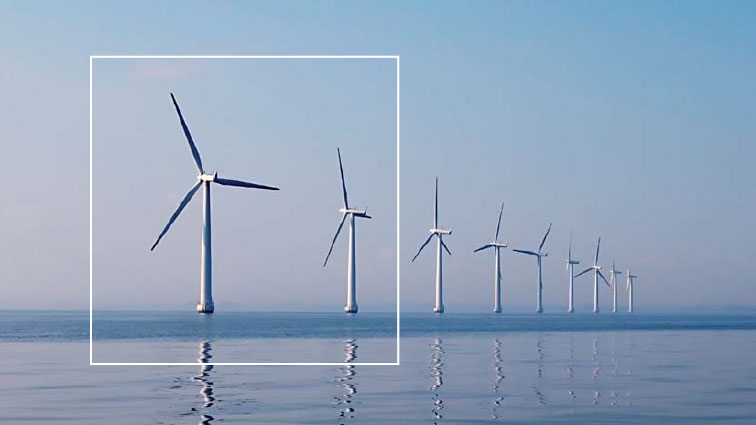4 min read • Energy, Utilities & Resources
New report warns technical investment necessary to ensure offshore wind’s role in Europe’s renewable energy mix
<p>Arthur D. Little urges offshore wind energy developers to improve upon 60 per cent availability through dedicated offshore testing facilities, R&D investment, and industry collaboration</p>
Despite being clean, green, and supported by policy makers, according to a report released today by global management consultancy Arthur D. Little, offshore wind faces significant barriers to cementing its position as a key component of Europe's future renewable energy mix. The new study, "
All at sea", suggests that despite strong progress to date, supply constraints, logistical difficulties, and technical barriers could lead to stalled expansion in the sector, with wide-reaching implications for meeting EU renewable energy targets and the industry's development outside of Europe, particularly in the US and Asia.
With onshore wind facilities boasting 97% availability rates compared to 60% availability offshore, Arthur D. Little's latest study identifies a high technical failure rate in offshore wind equipment as the main challenge the industry must address over the next five years in order to bring availability closer in line with onshore generation.
The report identifies the high failure of offshore wind turbines as the critical technical issue that must be addressed before the industry can progress. According to the report, up to this point the same basic technology has been used to develop wind turbines for both on and offshore wind power generation. Given the remote locations, challenging physical environments, and logistical issues involved in regular maintenance for offshore wind, Arthur D. Little's study found that both capital investment in new technology and innovative approaches to turbine testing and repair will be critical for the future success of the offshore wind industry.
"The offshore wind market has been identified by European governments as key to achieving renewable energy targets over the next twelve years," said Matthew Jackson, the report's author and a consultant in Arthur D. Little's Sustainability & Risk Practice. "However, before offshore wind is able to become a serious player in meeting Europe's energy needs, offshore wind developers, turbine and component manufacturers, and government regulators must work together to address the technical failures that have resulted in 60% offshore wind availability to this point."
The full report, available online, outlines Arthur D. Little's specific recommendations for industry collaboration to overcome the challenges of equipment failure and low availability levels as compared to the onshore wind market. The report emphasizes the need for both investors and developers to recognize the unique challenges facing equipment development in the offshore environment and begin addressing these in order to ensure offshore wind becomes a significant, sustainable, and financially viable source of power.
All at Sea is now available for download at
www.adl.com/allatsea.
4 min read • Energy, Utilities & Resources
New report warns technical investment necessary to ensure offshore wind’s role in Europe’s renewable energy mix
<p>Arthur D. Little urges offshore wind energy developers to improve upon 60 per cent availability through dedicated offshore testing facilities, R&D investment, and industry collaboration</p>
Despite being clean, green, and supported by policy makers, according to a report released today by global management consultancy Arthur D. Little, offshore wind faces significant barriers to cementing its position as a key component of Europe's future renewable energy mix. The new study, "
All at sea", suggests that despite strong progress to date, supply constraints, logistical difficulties, and technical barriers could lead to stalled expansion in the sector, with wide-reaching implications for meeting EU renewable energy targets and the industry's development outside of Europe, particularly in the US and Asia.
With onshore wind facilities boasting 97% availability rates compared to 60% availability offshore, Arthur D. Little's latest study identifies a high technical failure rate in offshore wind equipment as the main challenge the industry must address over the next five years in order to bring availability closer in line with onshore generation.
The report identifies the high failure of offshore wind turbines as the critical technical issue that must be addressed before the industry can progress. According to the report, up to this point the same basic technology has been used to develop wind turbines for both on and offshore wind power generation. Given the remote locations, challenging physical environments, and logistical issues involved in regular maintenance for offshore wind, Arthur D. Little's study found that both capital investment in new technology and innovative approaches to turbine testing and repair will be critical for the future success of the offshore wind industry.
"The offshore wind market has been identified by European governments as key to achieving renewable energy targets over the next twelve years," said Matthew Jackson, the report's author and a consultant in Arthur D. Little's Sustainability & Risk Practice. "However, before offshore wind is able to become a serious player in meeting Europe's energy needs, offshore wind developers, turbine and component manufacturers, and government regulators must work together to address the technical failures that have resulted in 60% offshore wind availability to this point."
The full report, available online, outlines Arthur D. Little's specific recommendations for industry collaboration to overcome the challenges of equipment failure and low availability levels as compared to the onshore wind market. The report emphasizes the need for both investors and developers to recognize the unique challenges facing equipment development in the offshore environment and begin addressing these in order to ensure offshore wind becomes a significant, sustainable, and financially viable source of power.
All at Sea is now available for download at
www.adl.com/allatsea.


